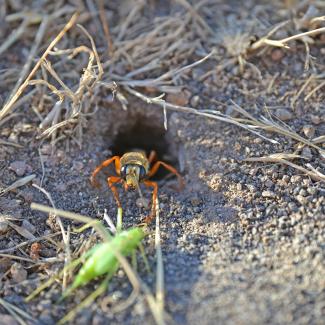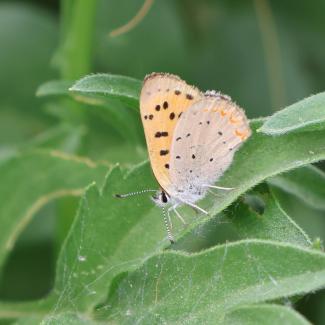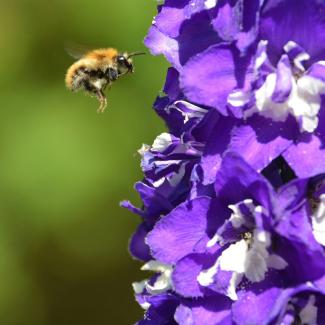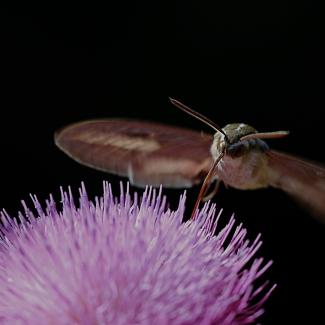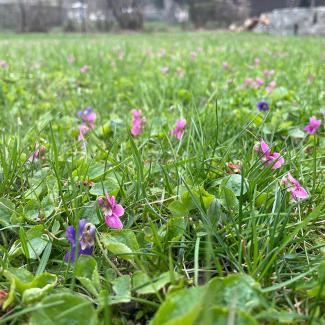Bee City and Bee Campus USA: Protecting Pollinators One Community at a Time
36 MinutesGuests: Laura Rost
An important element in the success of pollinator conservation efforts is communities of passionate people taking action. Bee City USA is one Xerces Society program that is helping people to do just that. Established in 2012, Bee City has been uniting communities around a shared goal of creating meaningful change for pollinators through policy change, habitat creation, and education.
Exploring Wasps: Myths, Facts, and Fascinations
43 MinutesGuests: Jennifer Hopwood, Rae Powers
Wasps. That word alone may make you squirm. They aren’t fluffy and cute like their close relatives, bees, and they don’t have the best reputation, but they do play an important role in our environment. Maybe they just need a PR makeover?
Pollinators in a Changing Climate: Threats and Solutions
34 MinutesGuests: Angela Laws
We’ve all heard about climate change. It’s a rather complicated issue—one that has come up several times in this podcast as we discuss the threats facing invertebrates. So in this episode, we will focus on what we can expect as our climate changes and what that means for our pollinators. And of course, what actions you can take to help these important insects in the face of climate change.
Wings of the Rockies: Exploring Butterfly Life Histories
44 MinutesGuests: Steve Armstead
In this episode of Bug Banter, we are closing out our series on butterflies across the United States by exploring those found in the Rockies. From prairies to mountain tops, the Rockies are made up of a diversity of ecosystems varying in altitude and temperature.
All About Bees: Celebrating Pollinator Week
59 MinutesGuests: Kass Urban-Mead, Rich Hatfield, Mace Vaughan
Happy Pollinator Week! In celebration, we assembled a panel of bee experts for this special Q&A session on bees, originally recorded live with audience questions.
Wings of the East: Exploring Butterfly Life Histories
36 MinutesGuests: Ray Moranz
Continuing with our series on butterflies, we are highlighting the butterflies east of the Rockies, which is a huge area and encompasses so many different environments — prairies in the Great Plains and the Midwest; forests of New England and the Southeast; mountains of the Appalachians; the wetlands and beaches of the Atlantic and the Gulf coasts.
Wings of the West: Exploring Butterflies
38 MinutesGuests: Kevin Burls
We often hear about monarch butterflies, but there are many other species of butterflies in North America. So we are kicking off a series of three podcast episodes to highlight butterflies in different regions of the US and today we are focusing on butterflies west of the Rockies!
Mosquitoes Matter: Untangling Myths & Mastering Management
36 MinutesGuests: Aaron Anderson
It was Jimmie Durante who first came up with the rhyme, “spring is sprung, the grass is riz; I wonder where them boidies is?” Of course, spring also means the return of insects — bees, butterflies, dragonflies, and yes, mosquitoes — and here at the Xerces Society we start getting questions about what to do about these pesky critters. Does spraying help? Does spraying harm other insects? What are the alternatives and do they work?
Midnight Entomology: Unveiling the Secrets of Nocturnal Insects
37 MinutesGuests: Emily May
As humans, we often think of the world through the lens of daylight — when we are most active. But at night, an entire world of insects comes to life and we are missing out!
No Mow May: A Starting Point, Not the Finish Line
29 MinutesGuests: Matthew Shepherd
Tired of mowing your law? We have good news — you don’t have to, and the bees (and fritillary butterflies) will thank you for it! Mowing your lawn less frequently can provide habitat for pollinators, especially in early spring. But, is that enough? What can we do to turn No Mow May into meaningful conservation of pollinators and other wildlife?


